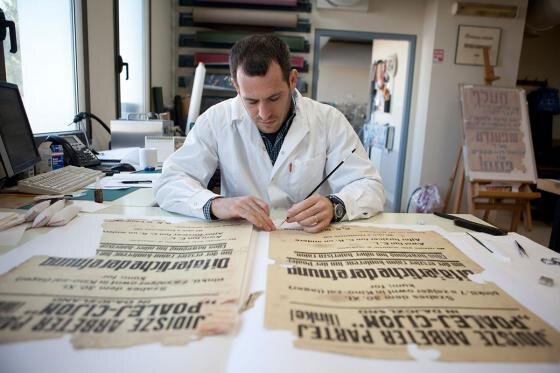
ARCHIVES
In 1953, the Israeli Knesset enacted the Yad Vashem Law, which determined that among its other missions, the task of Yad Vashem is “to collect, examine and publish testimony of the disaster and the heroism it called forth…”. Efforts to document the Holocaust had begun long before the passage of the law. From the Nazi rise to power in Germany, and throughout World War II, there were those who documented the events as they were taking place, often under the harshest conditions. Immediately after the war, centres for documentation and the collection of testimonies were established around the world, including Munich, Warsaw, Lodz, Lublin, Paris, Bratislava, and Budapest.
HISTORICAL RECORDS
Yad Vashem collects and safeguards millions of pieces of evidence so that an accurate and detailed historical record of the atrocities committed may be preserved and disseminated. With some 190 million pages of documentation, 129,000 survivor testimonies, and hundreds of thousands of original photographs, films, diaries and documents, Yad Vashem’s Archives contain the largest collection of Holocaust archival material in the world. Each item enlightens us in its own way, helping recreate the Jewish world prior to the war, the anguish and terror during the Holocaust, and Jewish life in its aftermath, passing on the stories of both the victims and the survivors. These archival collections serve as the basis for research scholars and historians around the globe and are the resource for the public.

PRESERVATION
In order to preserve the documents for future generations, and to enable easy access to the Archives, an experienced professional staff that includes archivists, historians and conservation experts is employed. The donated materials undergo an intake and organization process; they are catalogued in stages in a professional manner and stored under optimal conservation conditions. Documents requiring individual preservation are treated in the restoration laboratory.
As part of the renewal process of the Yad Vashem campus, the Archives will be moving to a new state-of-the-art building that was dedicated in 2000.

GATHERING THE FRAGMENTS
Yad Vashem is appealing to Holocaust survivors, family members and the general public to rescue documents, photographs and object from the years before WWII, during the Holocaust, and from DP camps and the immediate post-war period.
These items can be submitted to Yad Vashem together with their stories for preservation and posterity. Items include: memoirs, testimonies, films and video footage, art works, letters, documents, artifacts, diaries, and photographs.
Yad Vashem conserves and catalogues the materials and make them accessible to researchers, curators, educators, students and the wider public to learn, through them, what happened to the Jews before, during and after the Holocaust.


